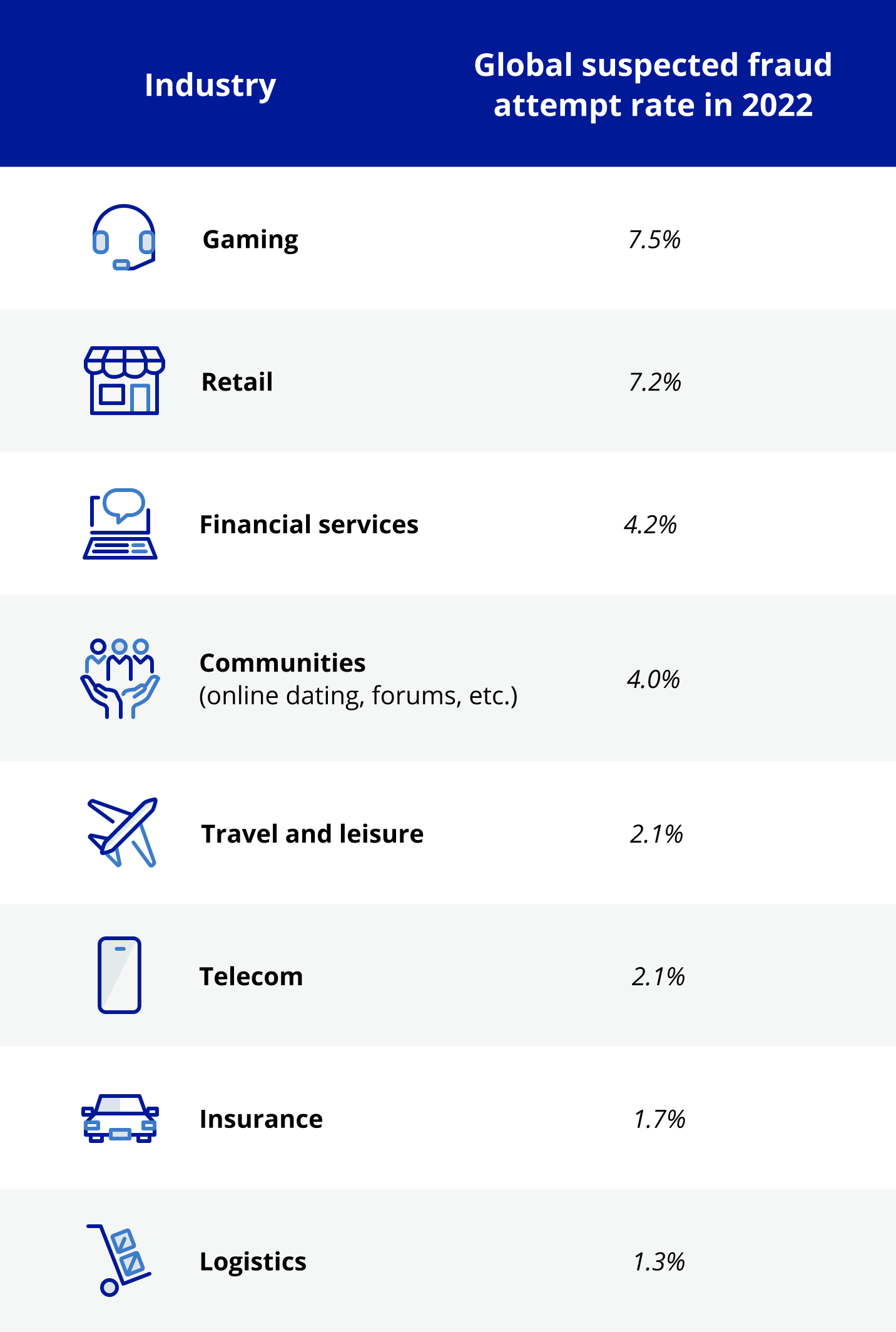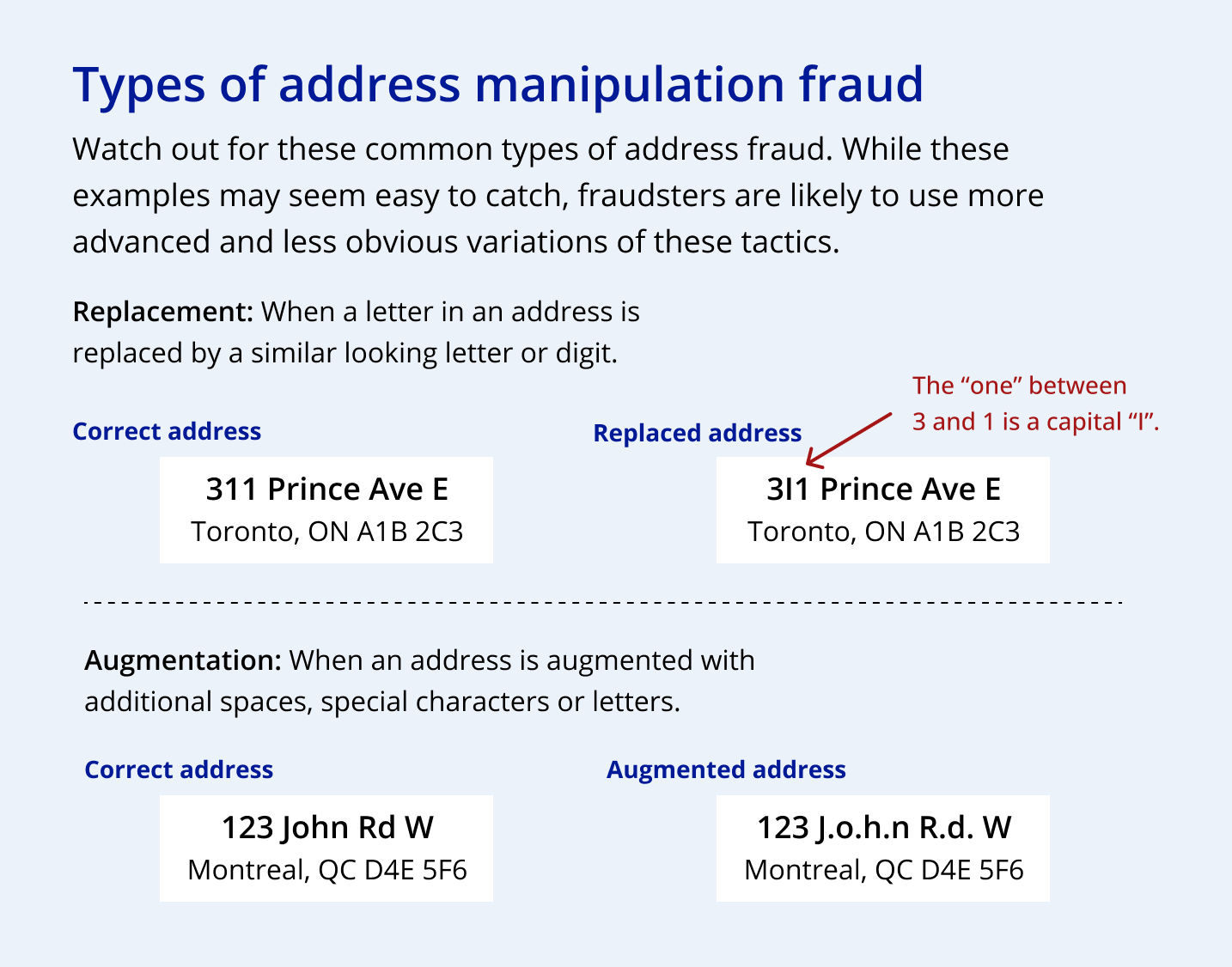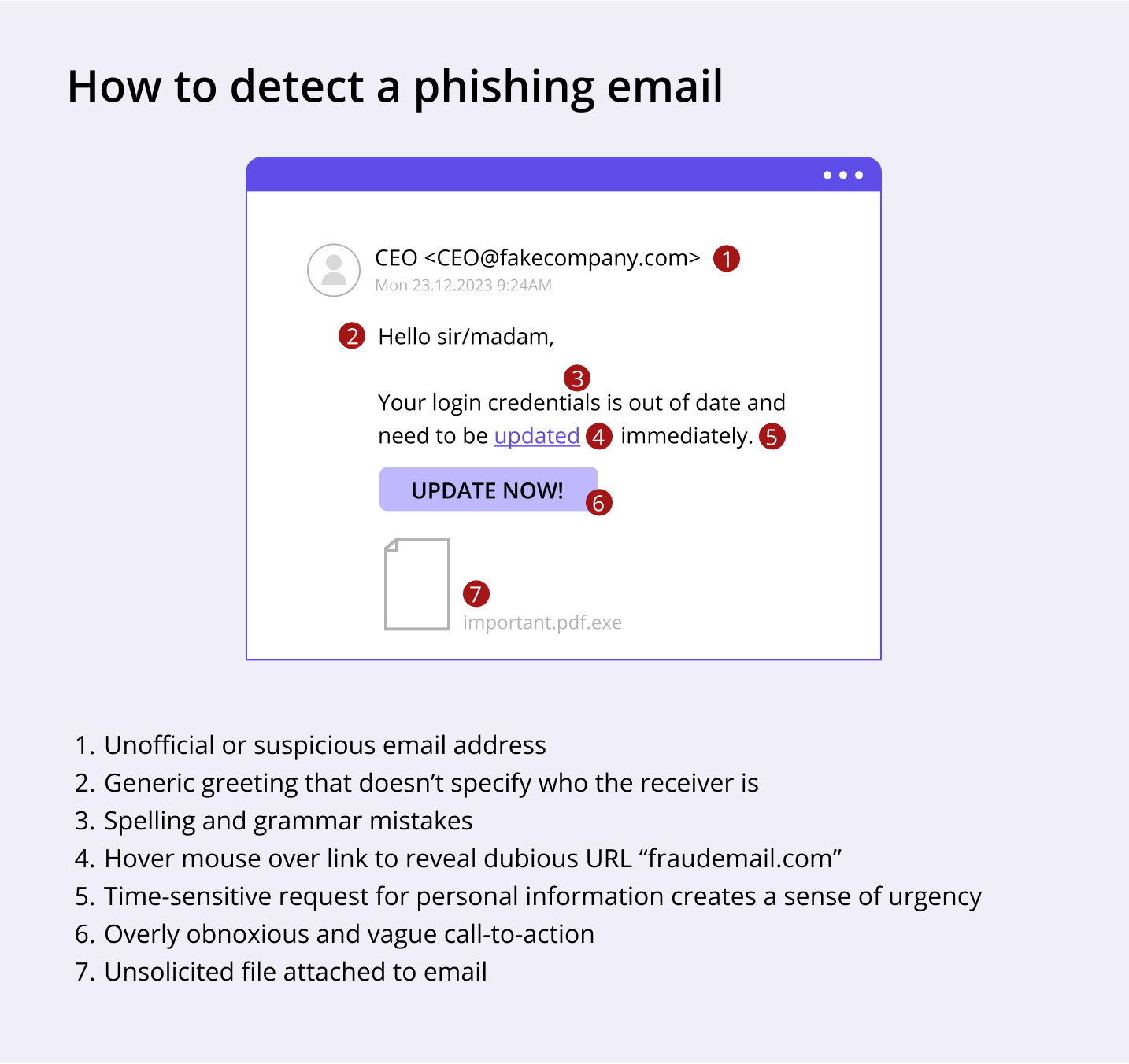Why e-commerce’s rapid rise attracts fraud
E-commerce fraud is a big concern for online merchants and customers alike. As more transactions are taking place online, fraudsters have found ways to exploit website platforms, and the businesses running them. This activity is especially difficult to catch when there are a surge of online transactions, like during holiday seasons. In fact, the total cost of e-commerce fraud in 2023 is expected to reach $206.8 billion USD. But what exactly is e-commerce fraud? Some online fraud examples include using stolen or fake credit cards to make transactions, using false identities or login credentials and engaging in affiliate fraud advertising. The consequences are very serious and wide reaching, and can range from financial losses, brand reputation damage, customer churn, increased operational costs, legal consequences, strained partnerships, inventory shortages, supply chain disruptions and more. Overall, fraud compromises the security of your business and your customers.
In this article, we’ll show you the most common e-commerce fraud tactics and how you can protect your business from them. We answer questions like:
Suspected fraud rates by industry
A study showed that retail ranked second highest among the global suspected online fraud rates last year. Not only that, but retail and logistics saw the highest suspected digital fraud rate between 2019 to 2022.
13 types of e-commerce fraud to watch for
There are many different kinds of e-commerce fraud, but generally the term refers to any fraudulent activity that happens during an online transaction. Cyber criminals often use fraud to obtain sensitive information or financial gain by deceiving or stealing from online shoppers, and by tricking your website’s automated systems
E-commerce and shipping fraud: What you need to know
The red flags of fraud
Here are a few warning signs that you and your employees should look out for when investigating a customer’s account. The more boxes you check off, the more likely there may be fraud involved.
- High-order volume and low-valued items: Has your customer been making many high-volume orders containing many low-valued items? If this trend drastically differs from their usual order volumes and item costs, check this box.
- Larger-than-average order: Is a recent order larger than your customer’s typical purchases? Check this box if the order includes many more items and is of a significantly higher cost than your customer’s previous orders, or if it’s the first order being made by a new customer.
- Unusual address or uncommon time of day: Was your customer’s typical shipping and/or billing address changed, misspelled or inconsistent with past orders? Are their shipping and billing addresses mismatched? And was the order made during hours outside their usual purchasing times? If you answered yes to all these questions, check this box.
- Multiple orders from many credit cards: Are there orders placed on three or more credit cards on one customer’s account? Be sure to look into the details of the individual credit cards, making sure that identifiers like name and address match. You can check this box off if you see multiple different names and addresses on the cards.
- String of orders from a high-risk country: Is there a recent string of orders being made from a new address in a different country than your customer’s usual place of residence? If so, check this box.
- Multiple declined transactions: Have recent transactions on a customer’s account been automatically declined? Whether it’s due to declined credit card payments or inaccurate shipping details, be sure to check this box if you notice that it’s a trend or if it’s followed by multiple smaller transactions that go through.
- Repeatedly expedited shipments : Have you noticed a sudden series of rushed orders being made by an account? Check this box if this activity is rare or unusual for that account.
- Various orders from the same IP address: Are there a variety of orders with different addresses and billing details being made by the same IP address? Check this box if that’s the case.
How to protect your B2B e-commerce business
Now that you know the risks of e-commerce fraud and all the different forms it can take, it’s easy to understand why fraud protection is crucial in today’s digital landscape. When it comes to businesses engaging in business-to-business (B2B) e-commerce, they need to implement robust measures to safeguard themselves and their customers from fraudulent activities. These measures include a combination of proactive strategies and reactive measures to detect, prevent and mitigate fraud risks. By staying vigilant with a multi-layered strategy and regularly training employees on how to identify fraud, businesses can significantly reduce their vulnerability to shipping and e-commerce fraud.
The following fraud protection techniques will help you ensure the integrity of your B2B e-commerce operations, while also being applicable to your business-to-customer (B2C) branches as well.
- Monitor and block fraudulent web activity: Firewalls and suspicious email attachment blockers serve as a first line of defense, protecting your business from various types of cyber threats. Firewalls examine incoming and outgoing data packets while you’re connected to the internet, applying predefined rules to determine whether to allow or block web traffic. You can set up firewall rules that specifically target known fraudulent apps or websites, significantly reducing the risk of unauthorized access or data breaches.In addition to firewalls, suspicious email attachment blockers play a crucial role in preventing e-commerce fraud. After all, cybercriminals often use email as a means to distribute malware or phishing attacks. The best email attachment blockers help detect and quarantine potentially harmful attachments, preventing them from reaching your inbox. This adds an extra layer of protection, as you’re less likely to accidentally open or interact with malicious attachments.
- Offer secure payment technology: Another way to protect your business against e-commerce fraud is to implement various secure payment technologies. For example, using HTTPS websites. HTTPS ensures that the communication between your customer’s browser and your website is encrypted, reducing the risk of data tampering. Additionally, requiring customers to input their Card Verification Value (CVV) for all purchases adds another layer of security. The CVV is a three-digit code found on the back of credit cards that helps verify that the customer making the purchase physically possesses the card. By combining these measures, you can mitigate the risk of e-commerce fraud and enhance the overall security of your online transactions.
- Implement fraud detection software: Fraud detection software allows you to identify and prevent fraudulent transactions in real time, minimizing the potential impact on your operations. These software solutions employ sophisticated algorithms and machine learning techniques to analyze data and detect patterns associated with fraudulent behaviour. By automatically flagging suspicious transactions on your online store, you can take immediate action by investigating further or by blocking the transaction to mitigate the risk of fraud.
- Train your employees to identify and report fraudulent emails and transactions: If you provide your employees with the necessary knowledge and skills to recognize fraud, your entire organization will stand a better chance against cyberattacks. It doesn’t take much time to educate your team on the common red flags of suspicious emails, such as unofficial email addresses, grammatical errors and urgent requests for sensitive information. The same goes for suspicious orders and transactions. Train your staff to look out for signs like unusual transaction patterns, rapid movement of funds, multiple accounts involved in an order and inconsistencies in customer information. Additionally, when your staff are assigned to manually review orders, encourage them to promptly report any suspicious activity they catch. By prioritizing employee training, you can strengthen your business’s security measures and foster a culture of vigilance.
- Collect only the minimum required customer data: By limiting the amount of customer personal information you store, you reduce the potential risk of exposing sensitive data if a breach occurs. It also makes your company’s database less desirable to hackers and fraudsters, as there is less valuable information to exploit. Collecting only strictly necessary data—such as first and last name, shipping address, phone number and email—helps safeguard your customers’ privacy and ensures your site complies with data protection regulations.
- Use an address verification service: When your customers provide their address during an online transaction, you can check its legitimacy by using an address verification service. This can prevent fraudsters from using stolen credit card information, or shipping products to reshippers and non-existent addresses. Address verification services utilize databases and algorithms to compare a suspicious address against official records and postal standards. By implementing this service, your business can reduce the risk of fraudulent transactions and minimize chargebacks.
- Stay vigilant during the holiday season: With the jump in online shopping activity during the holidays, fraudsters often try to take advantage of the busy and distracted environment. To stay proactive, your business can implement several strategies:
-
- Monitor and analyze customer data to detect any suspicious patterns.
- Implement an authentication process to help verify the identity of customers.
- Keep your software and systems up to date with the latest security patches.
- Prepare employees for the holiday season by reviewing common fraud techniques.
- Consider maximum order amounts: By setting a maximum limit on the amount that customers can order, you can mitigate the risk of potential fraudulent transactions. This limit acts as a preventive measure, as it makes it more difficult for fraudsters to make large purchases. It also serves as a deterrent, discouraging fraudsters from targeting your business in the first place.
- Implement a time limit for returns: Setting a specific time frame for returns can help minimize the risk of fraudulent activities, such as items-not-received fraud or refund abuse. This time restriction creates a sense of urgency for customers to make legitimate returns or purchases. By setting a time limit, you’ll have a legitimate reason to reject late returns. It also makes it easier to track and monitor return patterns for customers who repeatedly refund products. But this doesn’t mean you have to make returns difficult for your customers. Here’s how to create an easy and hassle-free e-commerce returns process.
How Purolator can help bolster your anti-fraud tactics
As a leading provider of integrated freight, packaging and logistics solutions, your e-commerce shipments are our top priority. Our shipping solutions combine convenience with protective measures, so you get the best of both worlds when you choose to ship with us.
-
- Ship without worries in our closed loop network: Trust in our closed loop network. We use 97% of our own assets, which means your shipments will have minimal third-party contact with no hand-offs and brokering, which leads to reduced risk of damage or theft. Our vast network covers 100% of Canadian postal codes, so you can send products almost anywhere in the country, knowing they’re in the right hands.
- Our trucks are TSR certified: Know that your ground shipments are protected, as all our trucks have the Transported Asset Protection Association (TAPA) Level 1 Trucking Security Requirements (TSR) certification.
- Keep track of your critical deliveries: We offer a Mission Critical service to fulfil your most urgent deliveries. With best-in-class tracking and route optimization, you’ll have complete visibility into your most vital shipments.
- Get accurate estimates for shipments to the U.S. and internationally: Count on us to give you the right estimates for all your cross-border shipments, so you can show your customers accurate shipping charges. Begin by telling us where and when you want to ship.
- Combat fraud with a TAPA-certified shipper: As a TAPA-certified company, we meet or exceed all standards when it comes to protecting your shipment. Prevent package rerouting and hacked shipping account fraud with our expertise. All our online shipping orders and accounts are monitored for irregular activity, and we collect data for analysis and collaboration with industry security professionals, ensuring proper controls and practices are in place. On top of that, our facilities use cameras, thermal imagery, radar and communication networks to catch any suspicious activity. Last but not least, we provide all our employees with extensive and ongoing anti-fraud training.
- Our billing process is protected: We use integrated web shipping tools and authentic billing procedures to protect against scams or fraud. The Purolator Billing Centre uses payment verification steps to verify genuine transactions. And our Purolator E-Ship ® EDI (Electronic Data Interchange) tool allows you to consolidate invoices from all of your shipping locations, so you can easily spot any inconsistencies or suspicious payments.
- Clearly identify your shipments with our label creation services: You can easily create and print a shipping label online in minutes. Start preparing your shipment now and make labels with our user-friendly QR codes. And if you ever suspect a shipment has been lost or damaged, filing a claim is fast and easy.
- Give your customers a personalized shipping experience: Improve your customer experience with Purolator Your Way. Your customers will gain total visibility into their shipment’s journey with SMS notifications at every stage and tracking for each individual package. They can also fully customize the last mile of delivery with features like:
-
- Flexible drop-off and pickup points with over 2,500 Purolator retail agents and Mobile Quick Stop locations throughout Canada.
- A next-day delivery guarantee via our wide range of courier services.
- Instructions for buzzer codes or specific drop-off locations.
- Added protective measures like Adult Signature Required or photo proof of delivery.
- A personalized customer service experience so recipients get the support they need, even en route! And if they happen to miss a delivery, there will always be clear next steps for how to receive it. Learn more about how you can win the last-mile challenge with the right shipping partner.
E-commerce shipping fraud continues to pose a significant threat to both businesses and customers. By knowing how to detect and identify e-commerce shipping fraud, and by taking steps to prevent and protect against it, you’ll be able to minimize its impact on your e-commerce business. But you don’t have to tackle this massive problem all on your own. Work with a trusted shipping provider who offers reliable payment methods and total visibility so you can rest assured that your customers are receiving their orders without a hitch.



